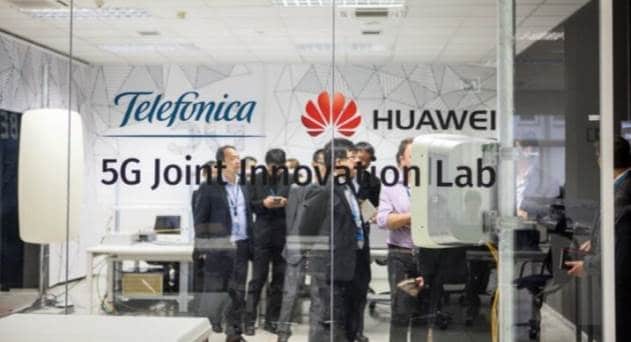Telefónica and Huawei claim world’s first PoC (proof-of-concept) on 5G UCNC (user centric and no cell) RAN (radio access network) architecture, tested in the Telefónica-Huawei 5G Joint Innovation Lab.
The 5G UCNC trial is part of the 5G & NG-RAN Joint Innovation agreement that both companies signed in June 2016.
The PoC saw number of 5G connections per cell increased by 233%, the signaling overhead decreased by 78%, and the latency decreased by 95% compared with LTE, said Huawei.
Telefónica and Huawei will continue with the next phase PoC test with the target to enhance the cell edge spectral efficiency, in order to avoid end user experience degradation at the cell edges and any service interruption across the network.
In addition to the UCNC PoC tests, Huawei and Telefónica successfully demonstrated the mmWave Multi-User MIMO technology based on 5G NR (New Radio) and Massive MIMO TDD technology. 70Gbps cell throughput was reached by mmWave Multi-User MIMO by delivering more than 35Gbps data rate to each user, which is 100 times faster compared to LTE today.
Huawei claims that it innovated the CloudRAN-based UCNC with Hyper-Cell network architecture, thus enabling the large-area coordination of many base station nodes to eliminate handovers between cells and reduce interference from adjacent cells. Re-architecting the traditional cell centric principle towards a user-centric access aims to ensure a consistent user experience across the network.
According to Huawei, UCNC is a novel radio access framework evolved from the classical cell-centric access protocol to a user-centric protocol with hyper-cell abstraction. UCNC can dramatically reduce the over-the-air protocol signaling overhead and the access protocol latency as well as increase the number of air-interface connection links. UCNC also defines the “ECO State” as a new device protocol state for sending short packets directly without the need of over-the-air signaling, thus making users be truly “always connected”.
Another key technology is “SCMA-based Grant Free Access”, which cansimplify uplink access procedures so as to reduce latency and increase the number ofconnected devices.
Enrique Blanco, Telefónica Global CTO
Telefónica collaboration with Huawei on 5G has allowed us to reach disruptive results like the use of User Centric No Cell eliminating handover between cells and reducing interference, which is asignificant step towards making 5G a really differential mobile system.
Dr. Tong Wen, Huawei Fellow and Huawei Wireless CTO
Our joint achievement on the Proof-of-Concept UCNC for NR RAN and trials for the fiber-like mmWave technology will pave the wayfrom 5G innovation to commercial reality.


















